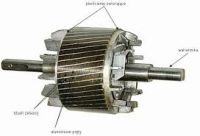Hello,
I have a 1.5 kW squirrel-cage motor, when idling (without load) it consumes a maximum of 4 A and heats up quite a bit. The resistance and connections of the windings are correct. Insulation resistance as well.
What could be the reason for the consumption of such maximum current?
Possible damage to the rotor of this motor? If so, how to check it?
Thank you for your help.
I have a 1.5 kW squirrel-cage motor, when idling (without load) it consumes a maximum of 4 A and heats up quite a bit. The resistance and connections of the windings are correct. Insulation resistance as well.
What could be the reason for the consumption of such maximum current?
Possible damage to the rotor of this motor? If so, how to check it?
Thank you for your help.





